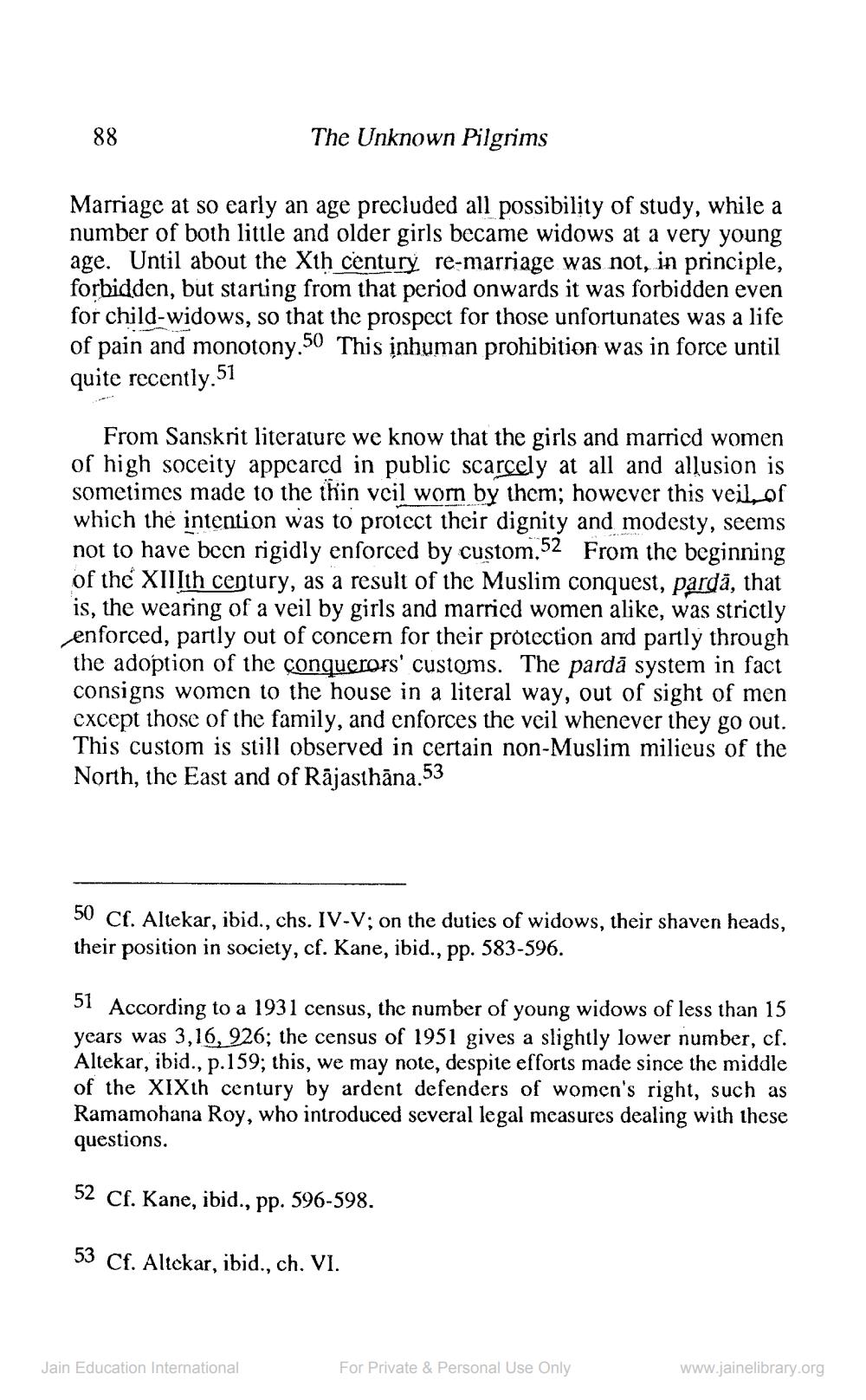________________
88
The Unknown Pilgrims
Marriage at so early an age precluded all possibility of study, while a number of both little and older girls became widows at a very young age. Until about the Xth century re-marriage was not, in principle, forbidden, but starting from that period onwards it was forbidden even for child-widows, so that the prospect for those unfortunates was a life of pain and monotony.50 This inhuman prohibition was in force until quite recently.51
From Sanskrit literature we know that the girls and married women of high soceity appeared in public scarcely at all and allusion is sometimes made to the thin vcil worn by them; however this veil of which the intention was to protect their dignity and modesty, seems not to have been rigidly enforced by custom.52 From the beginning of the XIIIth century, as a result of the Muslim conquest, pardā, that is, the wearing of a veil by girls and married women alike, was strictly enforced, partly out of concem for their protection and partly through the adoption of the conquerors' customs. The pardā system in fact consigns women to the house in a literal way, out of sight of men except those of the family, and enforces the veil whenever they go out. This custom is still observed in certain non-Muslim milieus of the North, the East and of Rajasthāna.53
50 Cf. Altekar, ibid., chs. IV-V; on the duties of widows, their shaven heads, their position in society, cf. Kane, ibid., pp. 583-596.
51 According to a 1931 census, the number of young widows of less than 15 years was 3,16, 926; the census of 1951 gives a slightly lower number, cf. Altekar, ibid., p.159; this, we may note, despite efforts made since the middle of the XIXth century by ardent defenders of women's right, such as Ramamohana Roy, who introduced several legal measures dealing with these questions.
52 Cf. Kane, ibid., pp. 596-598.
53 Cf. Altckar, ibid., ch. VI.
Jain Education International
For Private & Personal Use Only
www.jainelibrary.org




